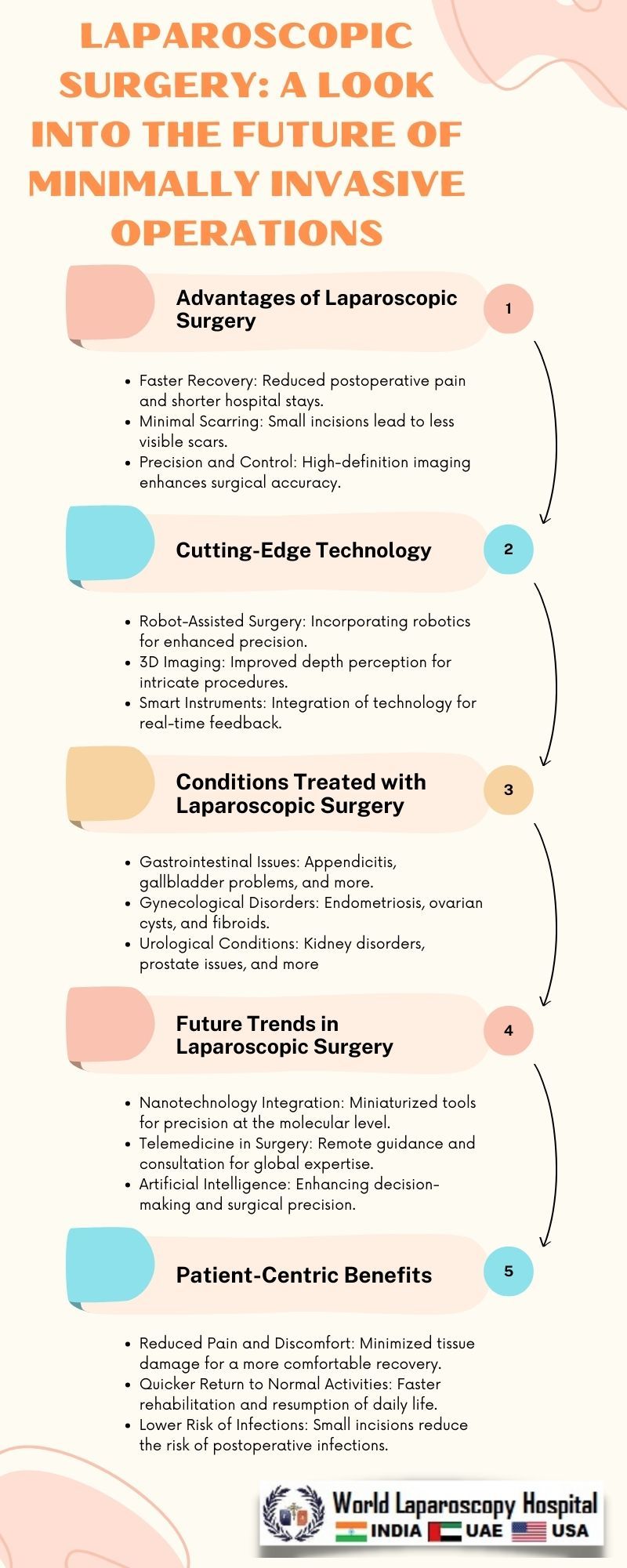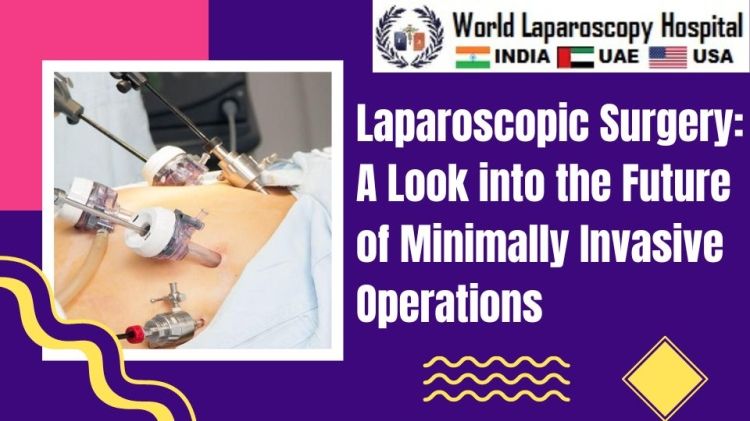Laparoscopic Surgery: A Look into the Future of Minimally Invasive Operations
Introduction
In the ever-evolving landscape of medical science, laparoscopic surgery has emerged as a groundbreaking technique, offering a glimpse into the future of minimally invasive operations. Unlike traditional open surgeries that often involve large incisions and extended recovery periods, laparoscopic procedures utilize small incisions and advanced technology, significantly reducing trauma to the patient's body. This article explores the history, current advancements, and the potential future of laparoscopic surgery, shedding light on how this technique is transforming the field of medicine.

Evolution of Laparoscopic Surgery
Historical Perspective
The roots of laparoscopic surgery can be traced back to the early 20th century when physicians began experimenting with endoscopic instruments for internal examinations. However, it wasn't until the late 20th century that laparoscopic surgery gained widespread acceptance. The 1980s marked a turning point with the introduction of advanced optics, camera systems, and robotic assistance, enabling surgeons to perform complex procedures with greater precision.
Key Technological Milestones
Optical Advancements:
The development of high-resolution cameras and improved optics allowed surgeons to visualize internal organs with unprecedented clarity, facilitating precise maneuvers during surgery.
Instrumentation Innovations:
Miniaturized surgical instruments, equipped with articulating tips and enhanced maneuverability, became essential components of laparoscopic toolsets, enabling surgeons to perform intricate tasks with dexterity.
Robotic Assistance:
The integration of robotic systems, such as the da Vinci Surgical System, revolutionized laparoscopic surgery. These systems provide surgeons with enhanced control and a three-dimensional view of the surgical field, further reducing invasiveness and improving patient outcomes.
Current Landscape of Laparoscopic Surgery
Widening Scope of Applications
Initially limited to simple procedures, laparoscopic surgery has expanded its reach across various medical specialties. Gynecology, urology, gastroenterology, and orthopedics are just a few fields where laparoscopic techniques are routinely applied. Complex surgeries, including organ removals and reconstructions, are now performed using minimally invasive approaches.
Benefits for Patients and Surgeons
Reduced Recovery Time:
One of the primary advantages of laparoscopic surgery is the significantly shorter recovery time compared to traditional open procedures. Smaller incisions result in less postoperative pain and faster healing, allowing patients to return to their normal activities sooner.
Minimal Scarring:
The cosmetic benefits of laparoscopic surgery cannot be overstated. The smaller incisions lead to minimal scarring, enhancing the overall patient experience and satisfaction.
Enhanced Precision:
Surgeons benefit from improved visualization and precision, thanks to advanced camera systems and robotic assistance. This allows for more accurate and delicate maneuvers, particularly in challenging anatomical locations.
Lower Risk of Complications:
The reduced trauma to surrounding tissues and organs during laparoscopic surgery contributes to a lower risk of complications such as infections, bleeding, and hernias.
Challenges and Limitations
While laparoscopic surgery has undoubtedly transformed the medical landscape, it is not without its challenges and limitations.
Learning Curve
Adopting laparoscopic techniques requires specialized training for surgeons. The learning curve can be steep, and proficiency in laparoscopic procedures may take time to develop. Ensuring that surgeons receive comprehensive training is crucial to optimizing patient outcomes.
Cost Considerations
The initial investment in laparoscopic equipment, including robotic systems, can be substantial. While the long-term benefits in terms of reduced hospital stays and faster recovery may outweigh the costs, affordability and access to this technology remain challenges in certain healthcare systems.
Limited Accessibility
Despite advancements, laparoscopic surgery may not be universally accessible, particularly in resource-limited regions. The requirement for specialized equipment, trained personnel, and infrastructure poses barriers to its widespread adoption.
Future Innovations and Potential Breakthroughs
As technology continues to advance, the future of laparoscopic surgery holds exciting possibilities.
Artificial Intelligence Integration
The integration of artificial intelligence (AI) into laparoscopic surgery is on the horizon. AI algorithms can assist surgeons in decision-making, enhance image analysis, and potentially predict complications, further improving the precision and safety of procedures.
Augmented Reality
Augmented reality (AR) has the potential to revolutionize the way surgeons visualize and interact with the surgical field. AR overlays real-time digital information onto the surgeon's view, providing enhanced navigation and guidance during procedures.
Miniaturization of Instruments
Continued efforts to miniaturize surgical instruments aim to further reduce the invasiveness of laparoscopic procedures. Nano-sized instruments may enable surgeons to perform intricate tasks at a microscopic level, opening up new possibilities in fields such as neurosurgery and vascular surgery.
Telepresence Surgery
Advancements in communication technology may lead to the development of telepresence surgery, where surgeons can remotely operate robotic systems. This could bridge geographical gaps, allowing expert surgeons to assist in complex procedures regardless of their physical location.
Conclusion
Laparoscopic surgery has evolved from a novel approach to a standard of care in various medical specialties. Its ability to minimize invasiveness, reduce recovery times, and enhance precision has positioned it as the future of surgical interventions. While challenges such as the learning curve and cost considerations persist, ongoing technological innovations hold the promise of overcoming these barriers, ultimately shaping the next frontier of minimally invasive operations. As we continue to push the boundaries of medical science, laparoscopic surgery stands as a testament to the transformative power of innovation in healthcare.
